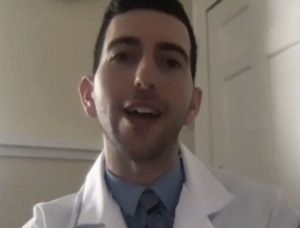
Increases in cigarette taxes appear to be an effective strategy to cut active smoking among patients who are undergoing interventions for intermittent claudication, the New England Society for Vascular Surgery (NESVS) virtual annual meeting (Sept. 11–12) heard.
That was the chief finding of an investigation into data derived from multiple medical centers across the United States entitled, “Patients undergoing interventions for intermittent claudication in states that increased cigarette tax are less likely to actively smoke.”
In addition, older patients and Medicare recipients are the groups most affected by the tax increases, the authors found.
The study data were presented by Scott R. Levin, MD, a general surgery resident at Boston University School of Medicine, during a NESVS rapid-fire session on Sept. 12.
Levin et al set out against the backdrop of Society for Vascular Surgery (SVS) guidelines that state interventions for claudication should only be offered after patients quit smoking.
Yet, Levin told the NESVS audience, the prevalence of active smoking among claudication patients at the time of intervention remains high. In this vein, state cigarette taxes and smoke-free air laws such as workplace smoking bans have had promising impacts on smoking prevalence, he explained.
Levin and colleagues say population-level strategies on smoking prevalence among patients with claudication are lacking. In their study, they aimed to determine whether state cigarettes tax and smoke-free legislation have any impact on active smoking among patients receiving treatment for intermittent claudication.
The research team conducted a quasi-experimental study using Vascular Quality Initiative (VQI) data from 2011–2019. Tapping into a well of 600 medical centers, they sourced roughly 60,000 patients in 25 states with at least three participating medical centers. Homing in on state cigarette taxes and the implementation of smoke-free workplace legislation, the investigators linked such tobacco-control policies with patients based on the state and month/year in which they underwent intervention.
 They deployed a difference-in-differences statistical analysis—a causal inference technique—to estimate the impact of tobacco policies on active smoking. Most patients in the sample were concentrated on the East Coast and Midwest. Across the study period, Levin said, active smoking decreased from 48% to 40%. The active smoking prevalence by state varied from 27% in California to 57% in West Virginia.
They deployed a difference-in-differences statistical analysis—a causal inference technique—to estimate the impact of tobacco policies on active smoking. Most patients in the sample were concentrated on the East Coast and Midwest. Across the study period, Levin said, active smoking decreased from 48% to 40%. The active smoking prevalence by state varied from 27% in California to 57% in West Virginia.
Eight states increased cigarette taxes by 73% on average (adjusted for inflation). The number of states implementing smoke-free workplace legislation increased from 9 to 14 by the end of the study period. The authors found that every $1 tax increase was associated with a roughly 6-percentage point decrease in active smoking, “representing a 12% relative reduction in the proportion of patients actively smoking [95% confidence interval (CI), -10 to -1 percentage points; p=0.02] compared to a 48% baseline prevalence,” Levin said.
The authors found that implementation of smoke-free workplace legislation was not associated with a change in active smoking. “After further adjustment for patient characteristics, we observed similar results,” he added.
Furthermore, patients between 60–79 were the age group most affected by the tax increase. In terms of insurance type, those who receive Medicare were likewise the most impacted by tax rises.
“Patients undergoing interventions for claudication are less likely to actively smoke after states increase cigarette taxes,” Levin concluded. “Older patients and Medicare recipients were most price-sensitive, and smoke-free workplace legislation had no impact on active smoking.”
In answer to a question that queried what effects cannabis legalization might have on the trends revealed in the study, Levin added: “Typically, younger patients have been shown to switch to alternative products like e-cigarettes and marijuana, and that may be why we didn’t see as much of an impact of the tobacco laws on younger patients in our sample. They probably switched to alternative products and continued smoking. The older patients in our study were shown to have been most affected by the taxes, [and] might have been more impacted by the taxes by quitting as opposed to switching to other products.”











